Unit 202 Sampling: Bases
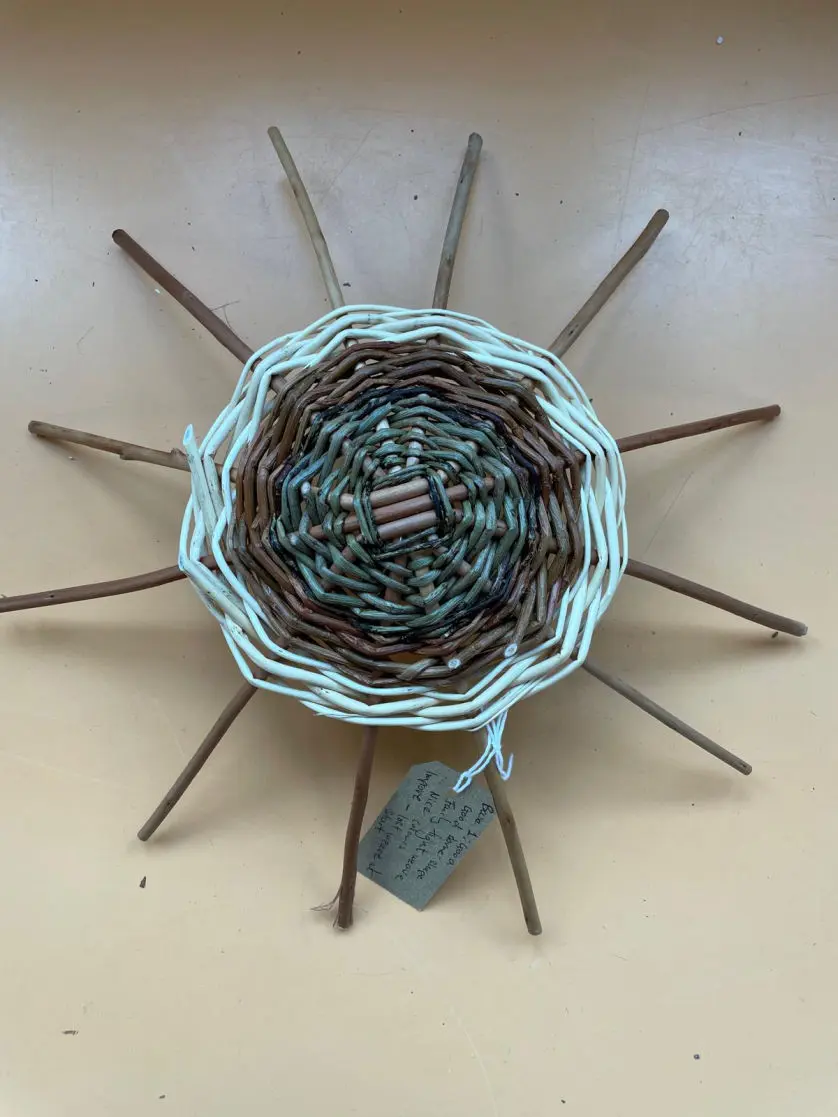
Bullseye
First base, single pair of weavers to start.
Slath: Buff
Inner: Norbury
Middle: Old French
Outer: White willow
Evaluation:
Good dome shape, pleased with the weave. Weave was quite tight but got a bit confused and skipped a stitch in places.
Went on to become a practice waste basket with fitching experiment.
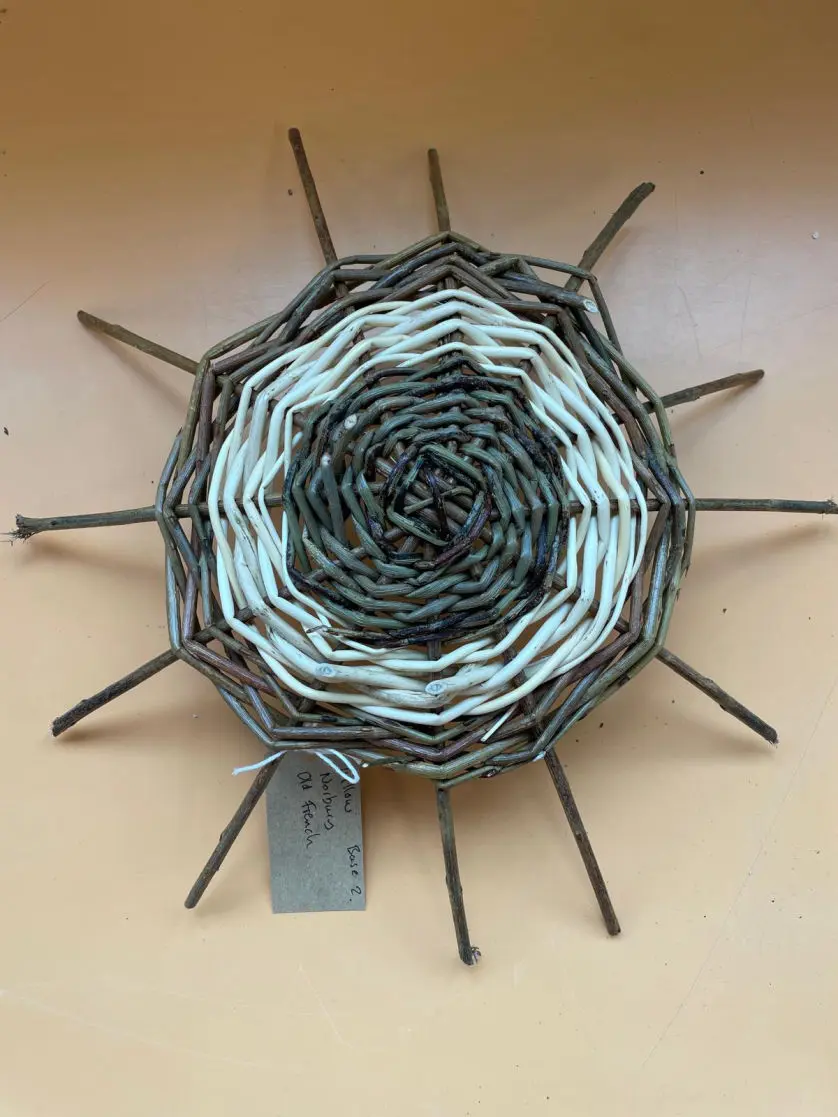
3x3 decorative slath
single pair of weavers to start with a decorative cross in the centre.
Slath: Dark Dicks
Centre: Norbury willow
Middle: White willow
Outer: Dark Dicks
Evaluation:
Missed a stich tying in the slath (saw it at the end, annoying). Forgot to do invisible joins on butt to butt change.
Went on to become the sampler basket.
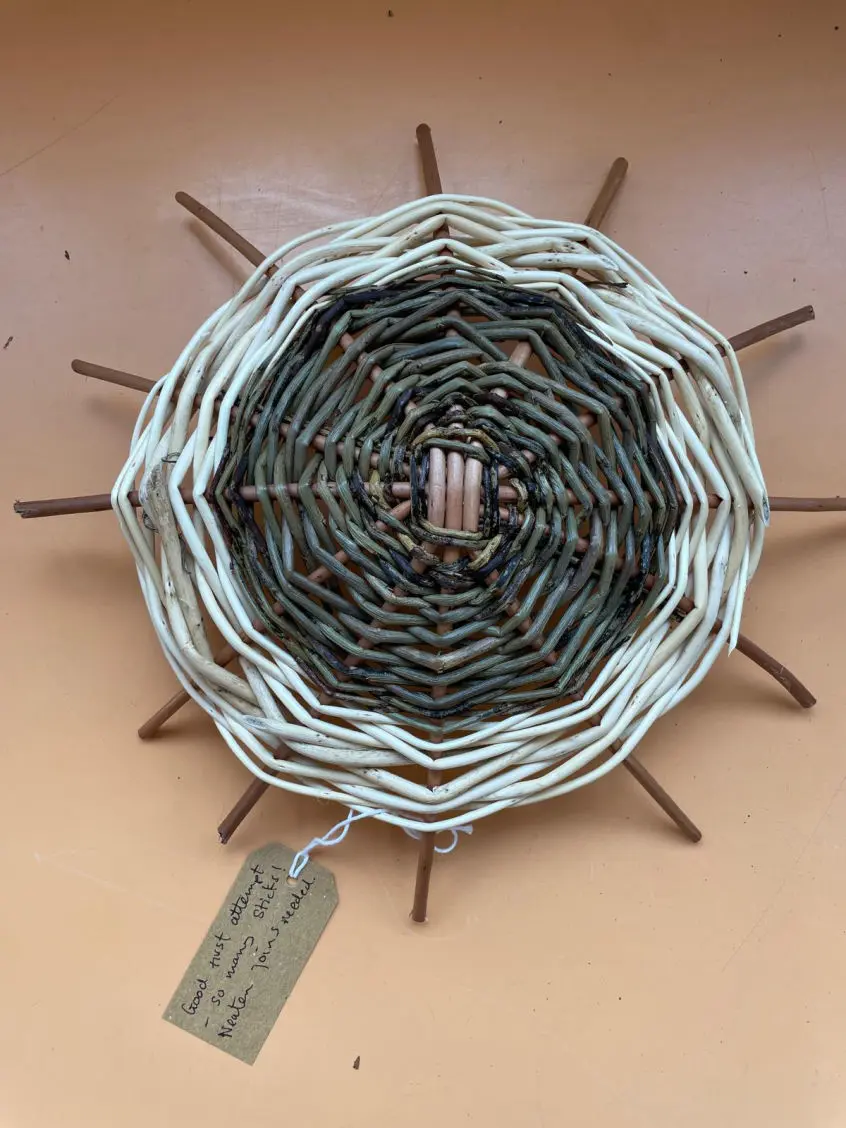
3x3 two tone base
Paired start, two tone pattern.
Slath: Buff
Centre: Norbury
Outer: White willow
Evaluation:
A good first attempt at a paired start. Weave was reasonably tight, joins could be neater.
Went on to become the fruit basket.
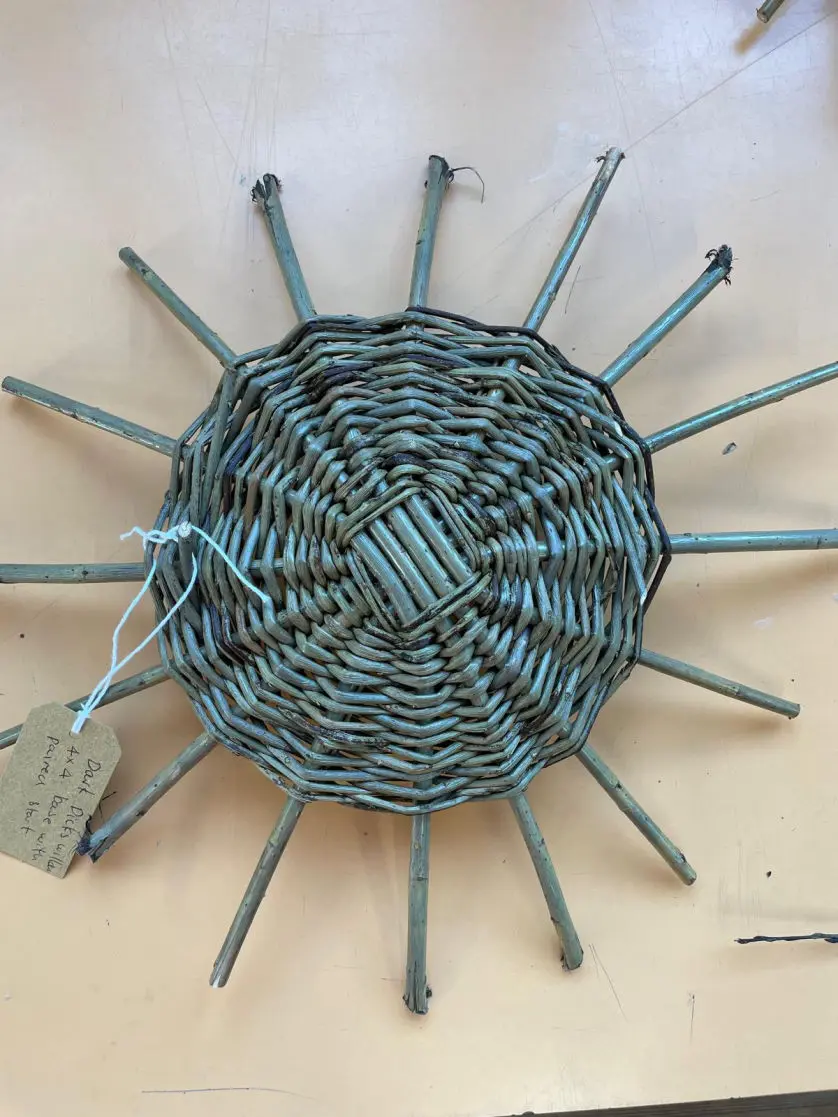
4x4 base
Paired start using similar colour material for base and weavers.
Slath: Dark Dicks
Weavers: Norbury
Evaluation:
Tried out weaving the opposite way to the previous two bases. Pleased with the result.Not as domed as a result of working inside out.
Went on to become the berry basket.
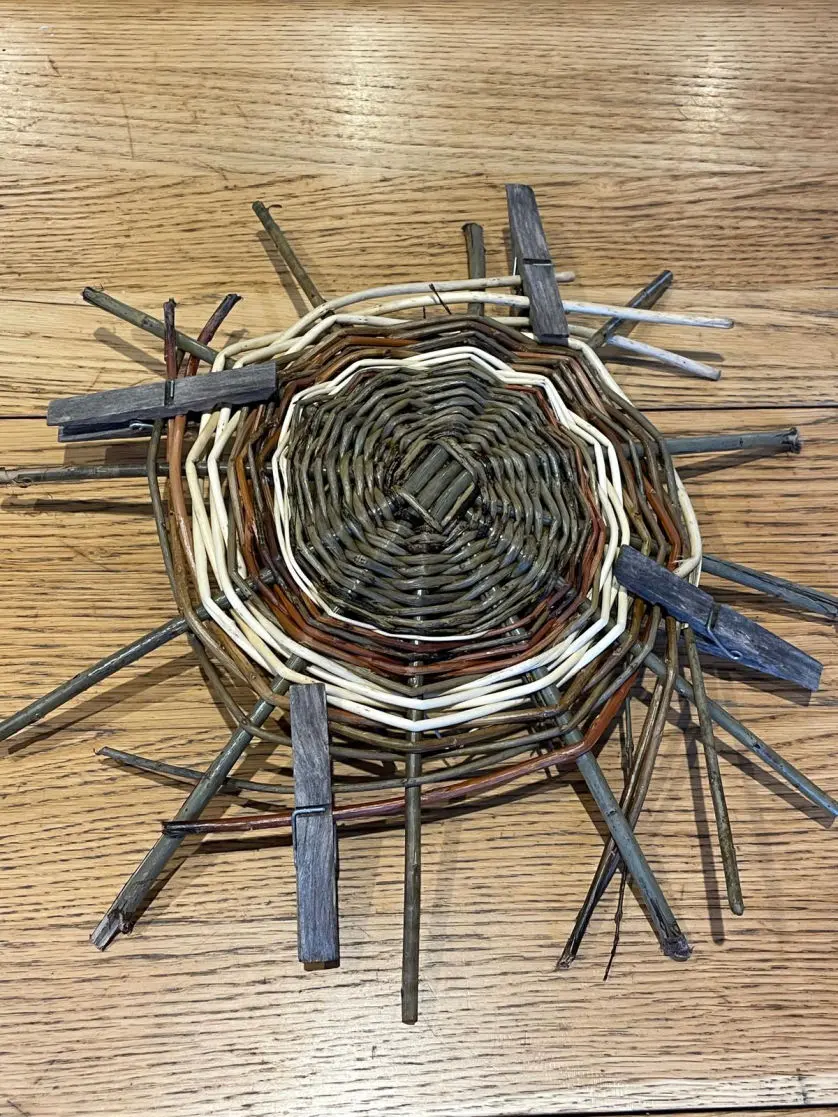
French randing base - three colour
Took material home to experiment with some French Randing after class. Used the three colours in thirds which produced a spiral pattern.
Slath: Dark Dicks
Randing: Norbury, Old French, white willow
Evaluation:
Didn't take quite enough material home, so excuse the pegs! Started tip to tip which was quite challenging to keep tight, especially after two days of the course.
However, I managed to finish this base off a few months later and it became the Hairy Shopper. I experimented with pairing in the side stakes to start spacing them out before up setting the basket. I think this is something I'll do with baskets.
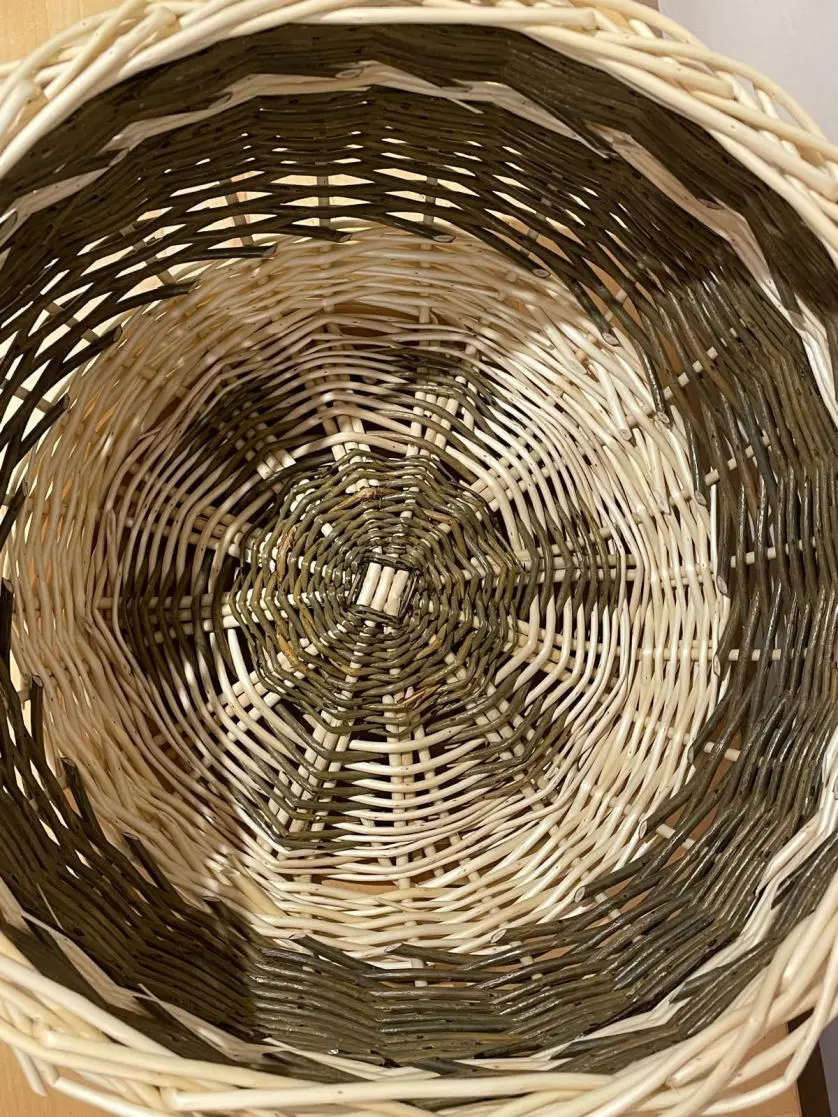
French randing base - alternate colour
Homework base for one of the shoppers. All material was 5ft as an experiment and to use up some chunky 5ft White Willow that had been soaked. Alternated white/ green.
Slath (3x3): White willow
Randing: White willow, Dicky meadows
Evaluation:
I thought this would produce two fine spirals of colour so was delighted when it actually made a pretty flower pattern. The chunkier material was harder to control and took longer as I wound every length to ensure they were flexible enough.
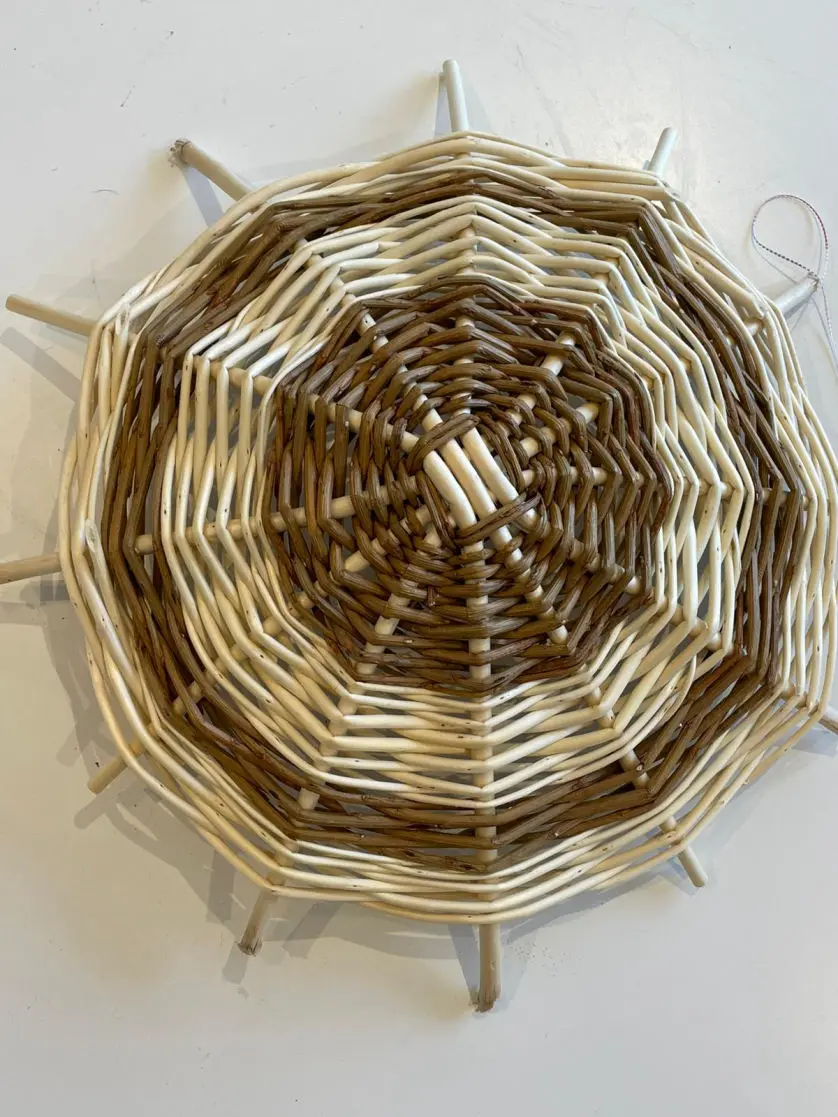
Bullseye 5ft material
Homework base for the shopper that ended up being a kindling basket. I wanted to use up some on the edge Old French that had started to go a bit mouldy on the inside of the bundle as it had sat for too long.
Slath (3x3): White willow
Pairing: White willow 5ft, Old French 4ft
Evaluation:
This base ended up bigger than I'd hope but using longer willow will obviously produce a wider base. The chunkier material also left more gaps and the joins are more obvious.
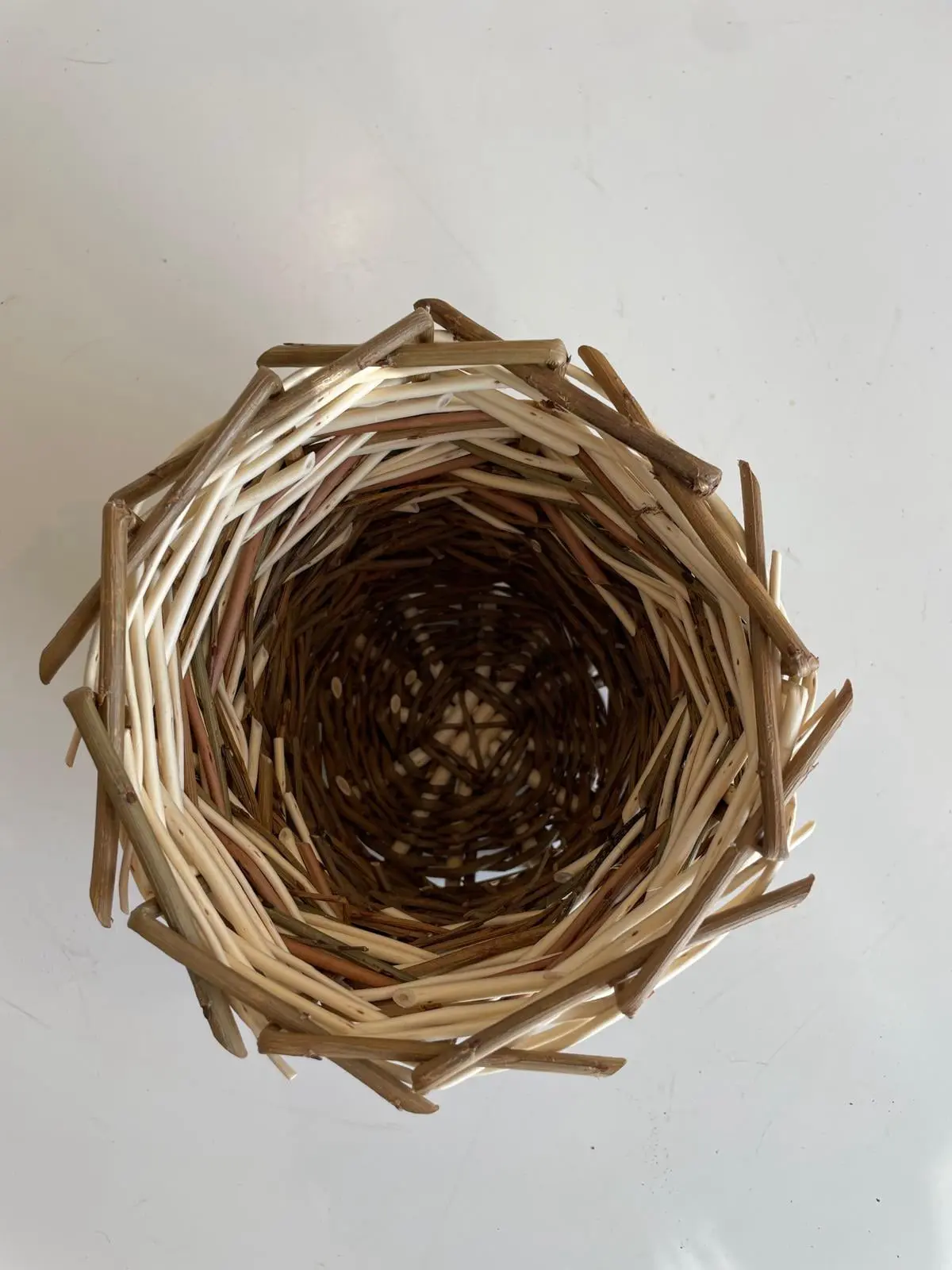
Mini-base
I had material left over after making the shopper and kindling baskets, so I thought I'll make a little basket.
Making a little basket was harder than I thought and I used the same size base stakes as the other two big baskets.
Slath (3x3 with decorative X): white willow, Old French
Evaluation:
I think using finer base stakes for a little basket would work better in terms of finished product and actually working the willow.
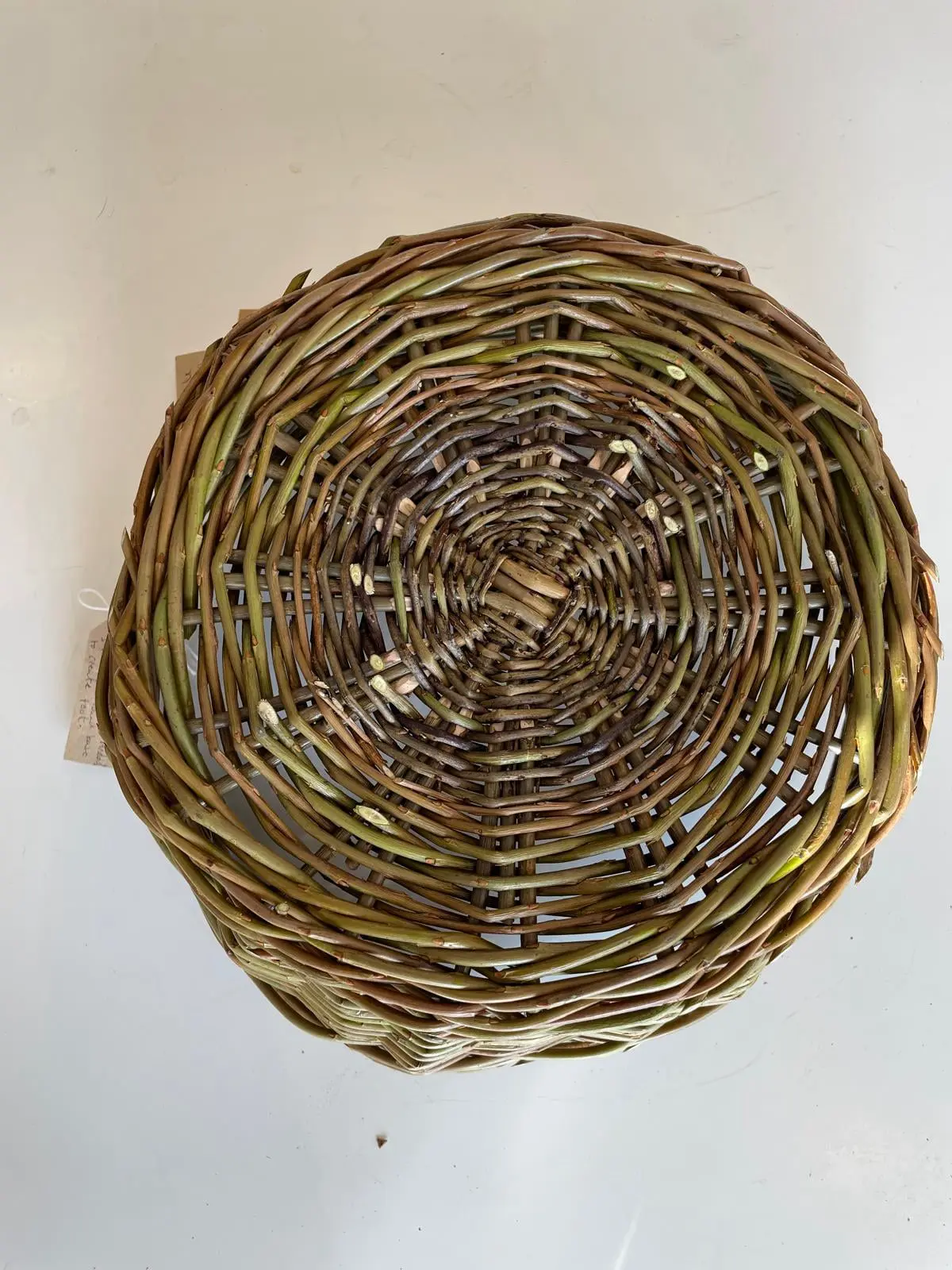
Paired base into a three rod wale foot
I saw a traditional basket at Acton Scott that went from pairing into a double row of three-rod waling to create a foot. I tried to replicate it with this base. However, I think that basket was made from some sort of cane.
Slath (3x3): Dicky meadows 5ft
Pairers start: Norbury
Pairers and walers: Black French
Evaluation:
- Overall it worked quite well with the waling to separate the stakes but I think I would use chunkier walers and just do one round (need to ask Gill if that would work).
- First time using fresh willow and it was slippery to work with and kinked unexpectedly in place yet was more supple in general.
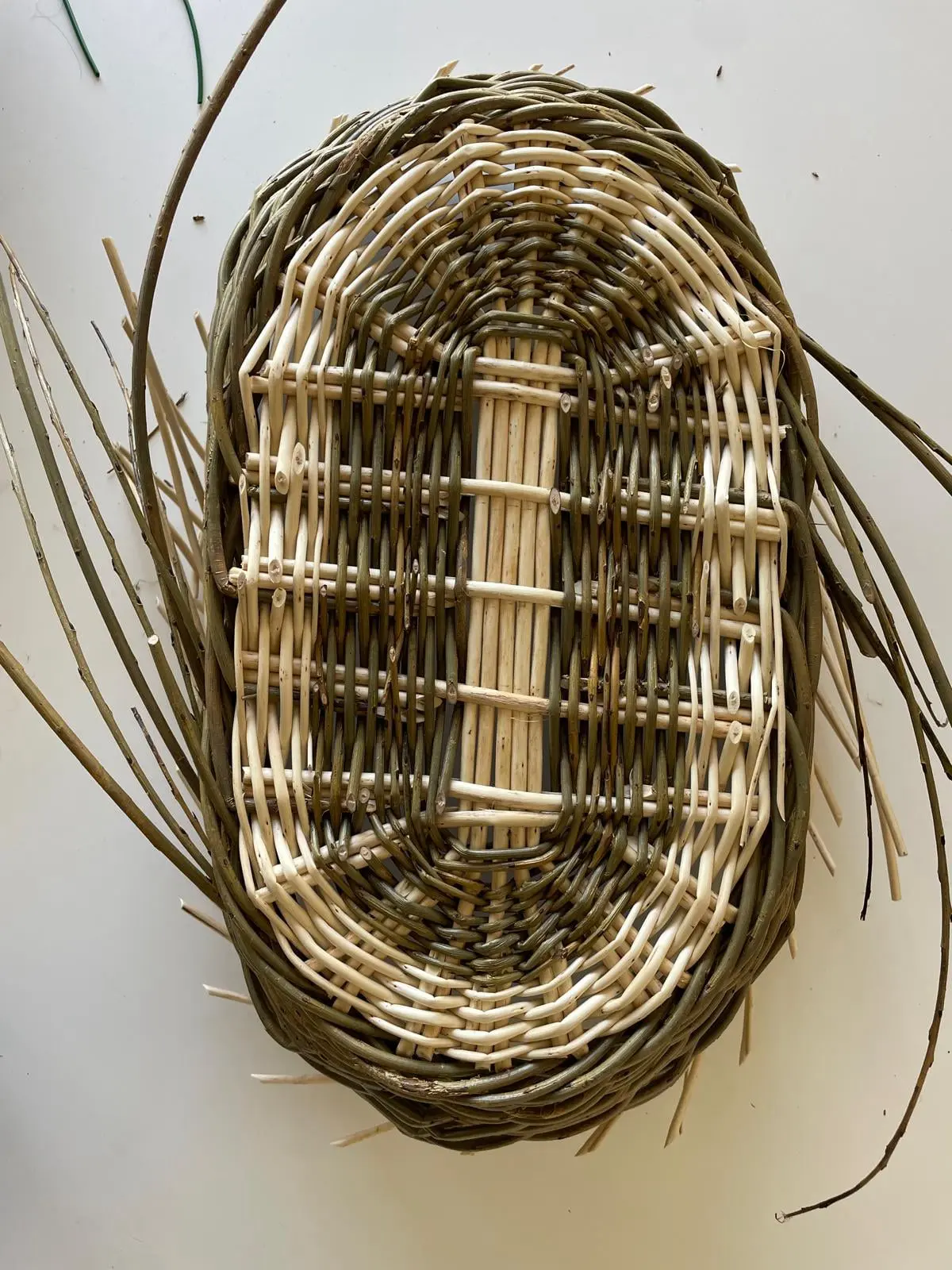
French oval base
This base was done in class following the French approach to oval bases rather than the English underfoot method.
This used:
5ft white willow
5ft Dicky Meadows
Evaluation:
Oh the oval base, what can I say. I did this class full of pain killers five days after having a molar out and I was all over the place (sadly this excuse isn't viable for whatever happened with the Catalan base next but is solid for this particular sample).
The good points are that I made it and got to understand the importance of swapping back from pairing to randing along the side on the corner, not just after the corner. There are few times where I have continued on one slath stake too far, which resulted in the base starting to twist. That twist never goes away no matter how much you try to straighten it out.
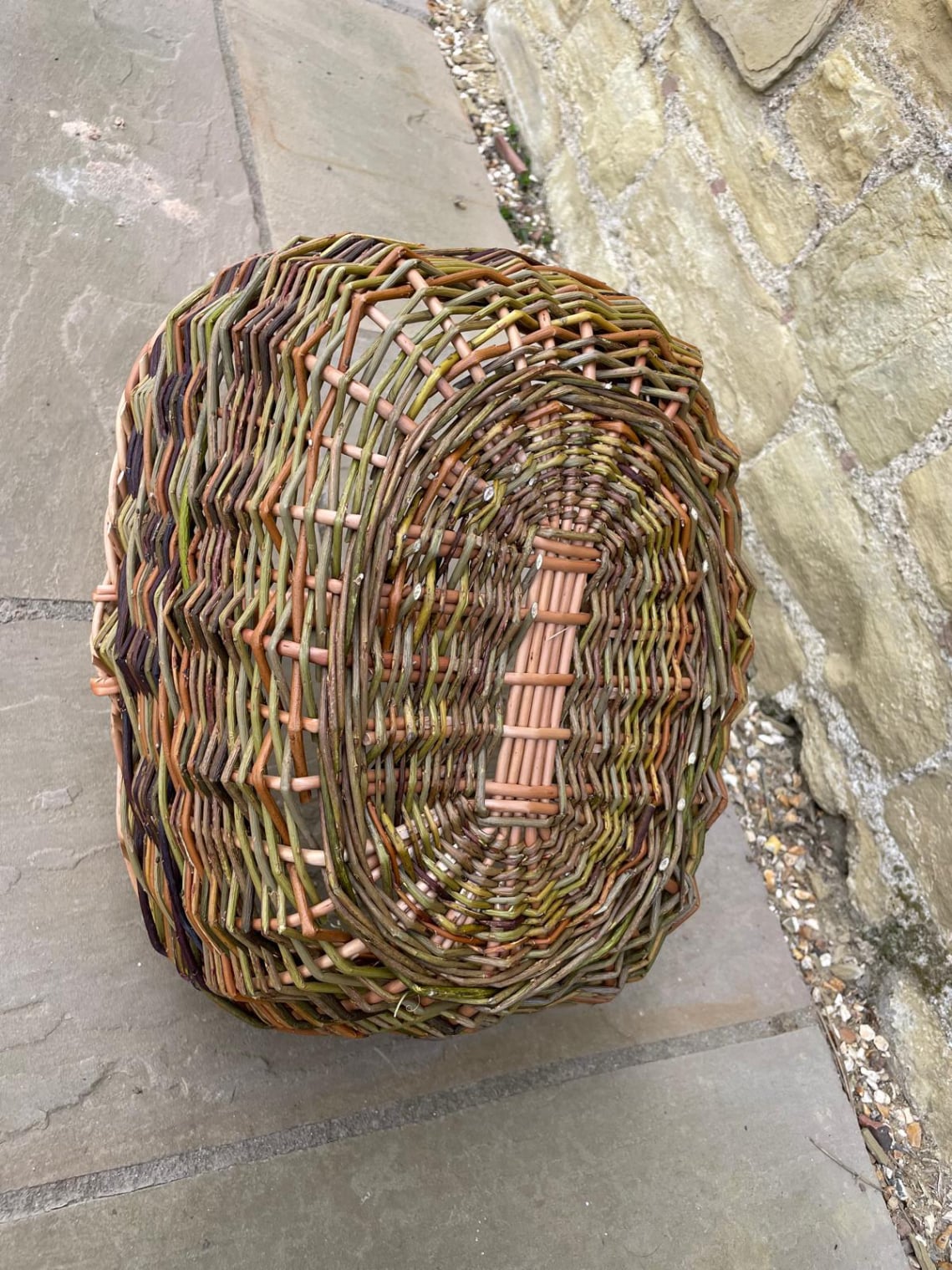
French oval base 2
This base was done for my traditional basket. I made two like this and both came out pretty well after losing my confidence a bit with the base made in class.
This used:
5ft buff base stakes
4ft mixed varieties bundle for the pairers/ weavers
Evaluation:
Using lots of different varieties was a really good experience as they are all very different thickness
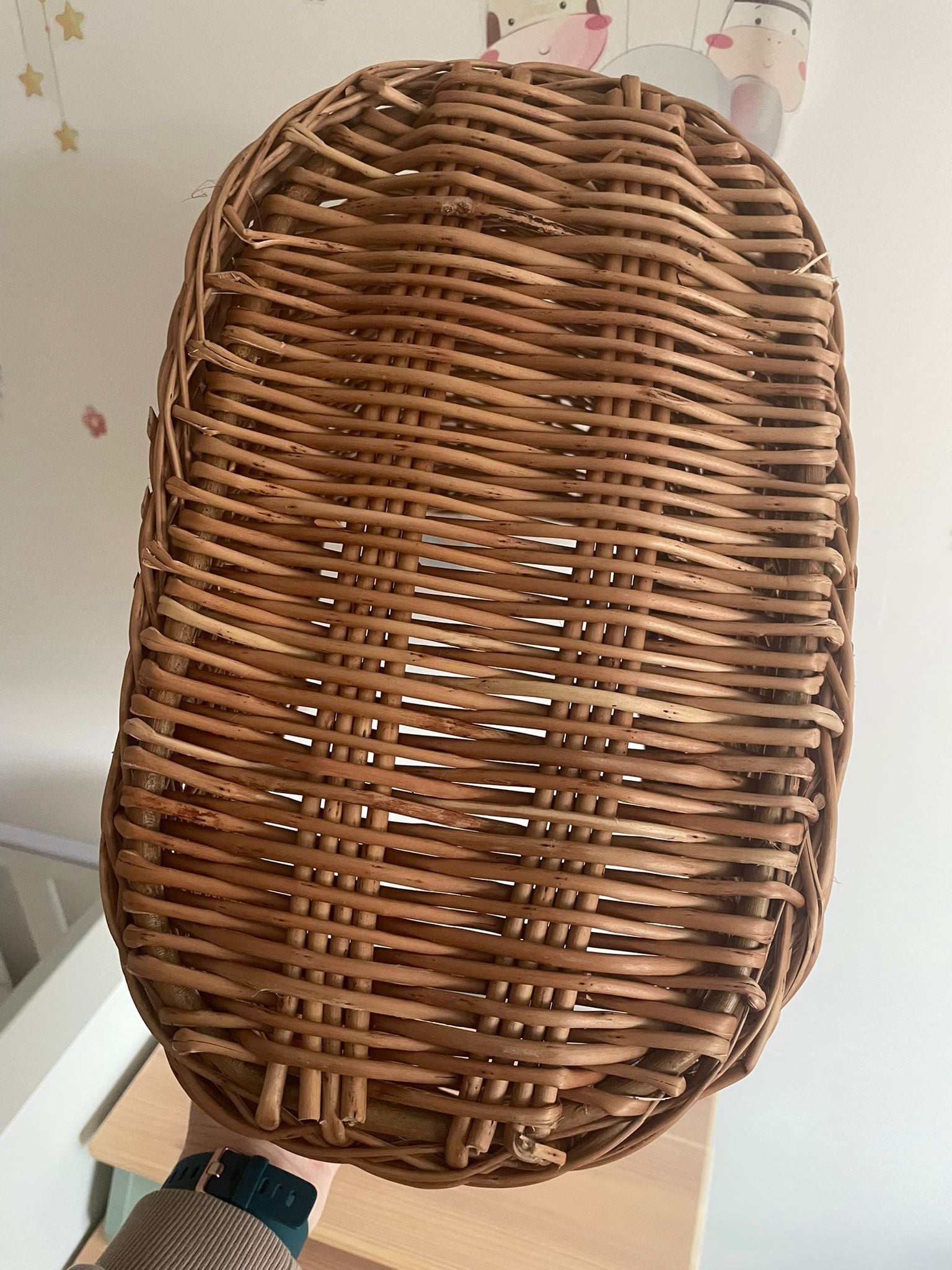
Paired base into a three rod wale foot
This is a Catalan base using an oval framed which we made using a former in the class before, then baking it in the oven and gluing together. The construction of the base use two sets of four long rods going straight down the long ends and then these are woven in place from roughly two thirds of the way down up to the end and then you flip it round and weave the opposite way to finish the bottom third.
This used:
4ft buff willow
Evaluation:
I should have used the 5ft that Gill suggested, but didn't trust it not to split. I felt like i got on quite well with the base and it would have been a fairly good base using the longer material.